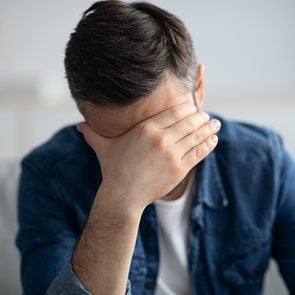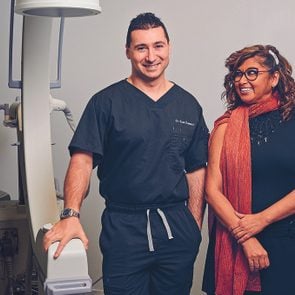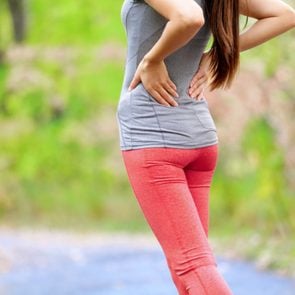Doctors Said Spina Bifida Would Limit Her Life. Her Parents Didn’t Listen.
When Hallee McCoombes was born, she wasn't expected to walk. Today, the 11-year-old is an athlete and aspiring Paralympian.
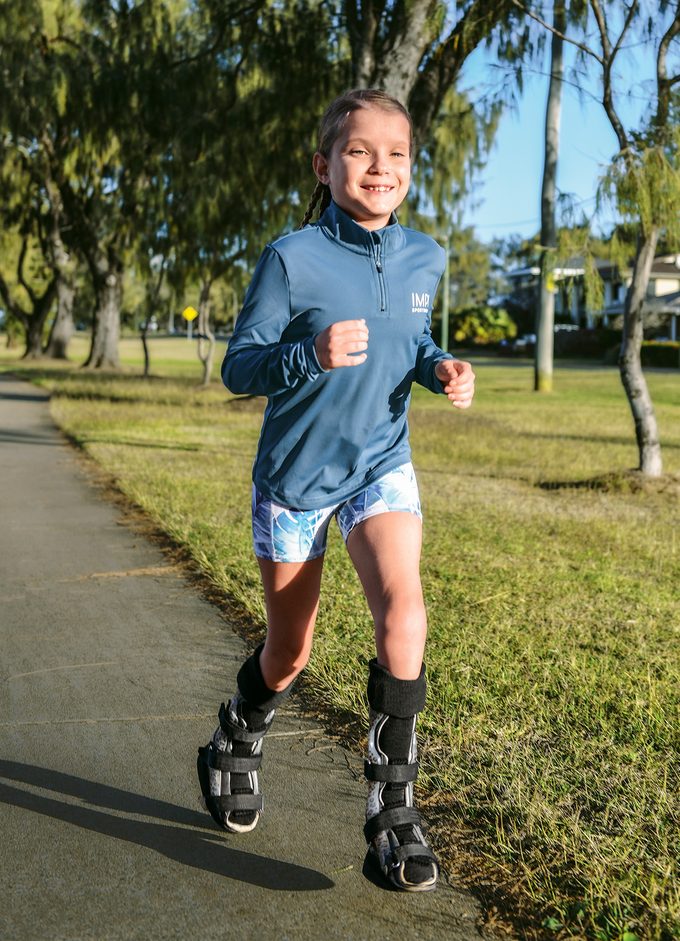
As Hallee McCoombes approaches the finish line of the 800-metre run for kids with a disability, the crowd is cheering wildly and chanting her name. The 10-year-old para-athlete had spent months preparing for the 2022 School Sport Australia Track & Field Championships in Brisbane. Now she has the hyper-focused expression that has become her trademark. Anyone who has seen her compete knows that nothing will stop her now.
With only 10 metres to go, Hallee tunes out all the noise and pushes forward with every ounce of her strength. She doesn’t have any feeling in her waist or below her knees, but pain sears her thighs. When Hallee crosses the finish line and falls into an exhausted heap, her twin, Jada, scoops her up in her arms. “You came in third!” she whispers to Hallee.
Hallee McCoombes has tallied numerous Australian track-and-field records in events for athletes with her type of impairments—100 metres, 200 metres, 400 metres, 800 metres, 1,500 metres, long jump, discus and javelin—and has set her sights on the Paralympics. It’s an amazing achievement for someone who wasn’t even expected to walk. Hallee was born with spina bifida, a neural-tube defect that affects how the spine and spinal cord form in the womb.
Her mother, Christine McCoombes, 38, shudders when she recalls learning about Hallee’s diagnosis. “The doctors also told us they didn’t know what kind of brain function she would have because she had hydrocephalus,” she recalls. “Fluid in the brain is common with spina bifida. We really didn’t know how much she’d be able to function physically and mentally.”
It’s no wonder that, regardless of how many times Hallee’s parents watch their determined daughter compete, their hearts burst with pride. “I cry every time, especially when people start cheering for her,” admits her dad, Gavin, 51.
A dream come true
Christine and Gavin met in 2007, when they were both working for a bank in Brisbane. Romance quickly sparked between them, and within two years they had married, started a cleaning business and set their sights on having children.
The journey to parenthood wasn’t easy: They faced the pain of multiple miscarriages. When they found out they were expecting twin girls in 2011, Gavin and Christine were over the moon. But the couple’s joy turned to anguish when Hallee’s spina bifida was revealed during Christine’s 20-week ultrasound.
“They couldn’t get a clear picture of the extent of it because her sister was taking up so much room, so they gave us the worst-case scenarios,” says Christine. “That really scared us.”
The doctors explained that they would typically recommend termination, but the situation with fraternal twins is more complicated: The wrong baby might be terminated. It was also possible that neither baby would survive the procedure.
Despite the grim outlook, Christine and Gavin chose to go ahead with the pregnancy; they had been hoping for a baby for too long.
To the McCoombes’ dismay, not everyone supported their decision. Some family members said they should terminate, and sometimes the couple felt very alone. Determined to keep going, they put on a brave face. They also followed their pediatrician’s advice not to look up information about spina bifida online because it would only add to their stress.
When Hallee and Jada came into the world in December 2011, their parents didn’t get to experience the emotional first cuddles they’d seen in the movies. Jada had to be whisked away seconds after birth because her placenta had ruptured, cutting off her oxygen supply. As for Hallee, her back was open, her spinal cord hanging out.
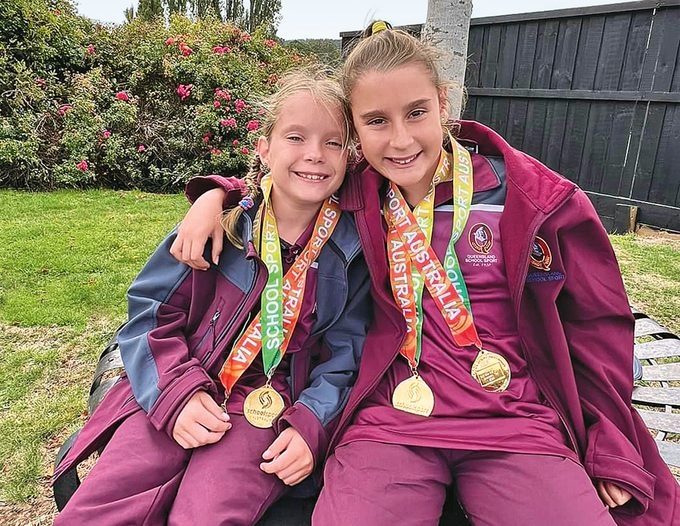
With both their newborns in intensive care, the new parents were left alone to deal with their fear and anguish.
Hallee underwent immediate surgery to repair her spinal cord and close her back. During the gruelling nine-hour procedure, a neurosurgeon placed Hallee’s neural tissues in her spinal canal and a plastic surgeon closed her back. Although the surgery was a success and Jada was also doing well, Christine and Gavin weren’t able to take their daughters home for another four weeks.
Hallee faced many challenges in her first year. As she recovered from surgery, she had to be placed on her stomach most of the time. Christine and Gavin needed to monitor Hallee’s breathing because sleeping on her tummy put her at a higher risk of sudden infant death syndrome. And whenever the family drove somewhere, Hallee was placed in a car seat with a special lining to protect her back.
When she was three months old, Hallee had a procedure to remove some of the fluid in her brain; if left untreated, hydrocephalus can result in brain damage or even death. But the surgery failed, and she was back in hospital a few months later for a second attempt. To her parents’ relief, that surgery was successful.
As those early months passed, the McCoombes were pleasantly surprised to see Hallee hitting her developmental milestones shortly after Jada did, including talking, rolling over and crawling. “Her first word was ‘mama’ at 10 months,” says Gavin. “Her only big delay was walking.”
Most children start walking sometime between 10 and 18 months, but Hallee needed casts to realign her feet, which were twisted and pointed upward. When the casts were removed, she had to wear ankle-foot orthoses (AFOs) and heavy boots to continue correcting the position of her feet. (Hallee, now 11, still wears AFOs to support her feet and ankles when she walks and runs; she gets around in a wheelchair over longer distances.)
Despite her struggles, Hallee had a secret weapon: a twin sister she was desperate to keep up with. “Jada definitely helped her with her disability,” says Christine with a smile. “Hallee needed a metal walking frame, and Jada would get in with her and move it for her. It was so cute!”
Hallee eventually started using the walker on her own. By the time the girls were two, they’d race around the house banging into walls and laughing. “They’d talk their twin language,” Christine says. “We had no idea what they were saying.”
Once Hallee started walking on her own at age three, her determination to keep up with Jada only grew stronger.
“I can do that, too”
Still, life was challenging for Hallee. At preschool, she often had to be held upright to be fed. And since she couldn’t regulate her body temperature, she suffered in hot and cold weather. Because of the demands of their business, Gavin and Christine employed nannies to care for the girls, who now had a little sister, Tia. But that made them feel as if the girls’ childhoods were passing them by. They knew they needed to make some changes.
So when the twins were five, the McCoombes moved to Elliott Heads, a coastal town 400 kilometres north of Brisbane, where life was less busy, giving Christine and Gavin more time with their children. They haven’t looked back. “Hallee has never been so happy,” Christine says. “I think it’s living on the ocean.”
Shortly after the move, Jada declared that she wanted to be a runner. Her parents signed her up for Little Athletics, a track-and-field organization for children and teenagers. After watching on the sidelines during Jada’s first training session, Hallee turned to her parents and said, “I can do that, too. Sign me up.”
Would she even be able to run? “Hallee doesn’t have feeling in her waist and lower legs,” explains Gavin, “which means she has issues with her balance and her muscle power.”
But Hallee’s parents has such strong belief in her that they signed her up. At first, she had to become more conscious of the vibrations created when her feet hit the ground and use that feeling to coordinate her movements. Before long she was running with Jada. “She had to work hard to maintain upper leg muscle and core support,” Gavin says.
In her second season with Little Athletics, Hallee started competing in running events for kids with a disability. The McCoombes were soon taking both girls to competitions around the country.
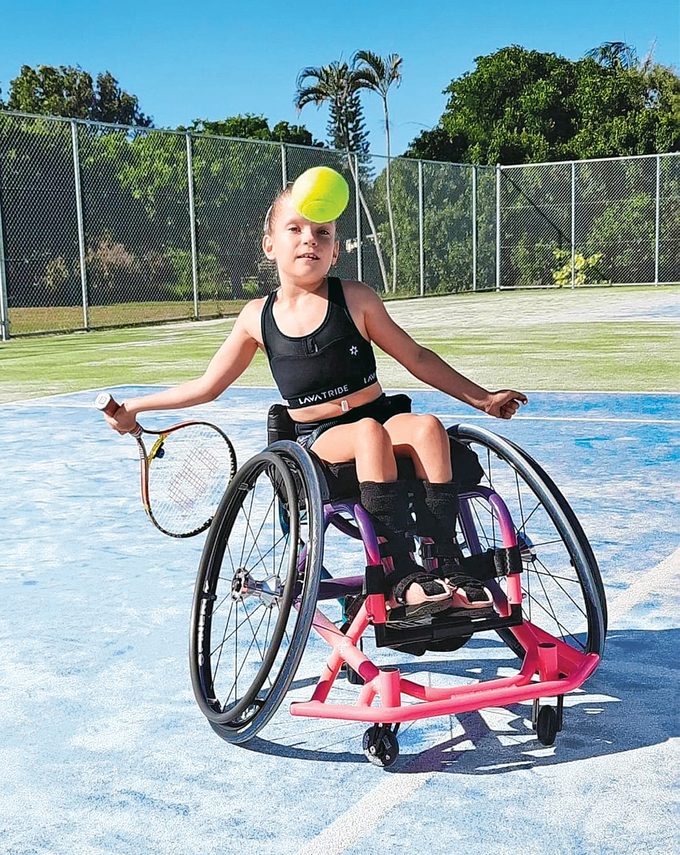
Hallee’s new-found passion wasn’t without its challenges. Her legs ached badly during and after races, and she feared that people would laugh at her. Gavin and Christine helped her work through her anxiety by attending all her events. In fact, nobody laughed; people marvelled at her fierce determination.
Hallee’s parents, however, weren’t spared criticism. “Some people thought we were too hard on her or that she was in pain and didn’t want to do it,” says Christine. “But we could see the benefits she was getting. Hallee just loved it.”
Participating in athletics was also good for her mental health—she learned what she was capable of and became even closer to Jada. “Hallee still gets anxious, but sport has helped so much,” says Christine. “It’s made her happier and more resilient.”
And the physical rewards speak for themselves. While most children with spina bifida require dozens of surgeries to treat bowel and bladder problems, as well as orthopedic issues like contracted muscles, dislocated hips and deformed feet and ankles, Hallee has undergone only 10 so far.
“She’s been able to put off ankle, foot, leg and knee surgeries,” says Gavin. “That’s not to say she won’t ever need them, but surgeons believe that getting out of her wheelchair and being so active has strengthened muscles that would normally be weak. They’ve told us, ‘Whatever you’re doing is working, so keep doing it.’”
Occupational therapist Karla Kirchner has worked with Hallee for three years to improve her gross motor skills, core strength, cognitive skills, sensory processing and emotional regulation. She dubs Hallee a “miracle girl” but is quick to point out that she wouldn’t be where she is today without her determination to beat the odds.
“She has surprised every health professional,” says Kirchner. “She’s a go-getter, a hard worker and a positive ball of energy. Her work ethic would put anyone to shame. The power of ‘I believe I can, therefore I do’ applies to Hallee.”
When she was six, Hallee started competing in triathlons. In the version of the event open to para-athletes aged five to 12, competitors swim 100 metres, cycle two kilometres and run 500 metres. Hallee uses a modified trike in the cycling segment.
She also does shot put, discus, javelin and long jump. At age eight, she added wheelchair tennis to her roster—a discipline that may be her ticket to the 2028 Summer Paralympics in Los Angeles.
“I want to go to America to see my granddad,” says Hallee with a grin. Christine’s father, who lives in Nevada, has always been very close to Hallee. “She hasn’t seen him since before Covid, but he FaceTimes her every morning,” explains Christine. “We often call him when she’s racing so he can see her compete.”
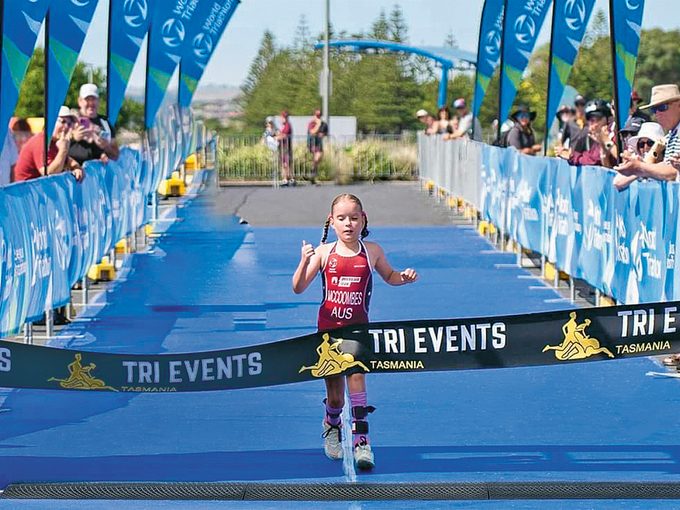
Wheelchair tennis may be the only way Hallee will qualify for the Paralympics, which has no events for athletes with lower-leg impairments who compete without prostheses. Her AFOs aren’t considered prostheses because they don’t replace a missing body part.
“It’s a battle we keep fighting,” says Gavin. “I emailed the Paralympic Committee in Germany to ask if they would offer an event for that classification, but I didn’t get much of a response. I think they should include that option, and if it turns out there aren’t enough athletes, then it doesn’t happen. But at least it would give people like Hallee something to aspire to.”
Adds Christine, who as a project coordinator for Little Athletics Australia advocates for inclusion in sport, “We just have to keep fighting or there won’t be any change.”
A bright future
When she isn’t training, competing or getting physical therapy, Hallee enjoys chatting online and playing Roblox with her friends on her tablet.
But Hallee has a few more tasks on her daily to-do list than her friends do. For one thing, many people with spina bifida experience bowel and bladder dysfunction, so Hallee can’t go to the toilet like most people do. She needs a catheter to empty her bladder and she has to do a bowel flush every second day. “Hallee has a tube in her belly button that’s connected to her bowel,” explains Gavin. “We open the cap and flush through a solution using a syringe and an adapter.”
Hallee and Jada still go to competitions together and are closer than ever. “They’re in separate classes at school, but if one is having an issue, the other one seems to know,” Christine says. “At night, we can’t separate them. They’re always snuggling.”
Nine-year-old Tia looks up to her older sisters. She also does athletics but has told her parents that she doesn’t want to compete because she wouldn’t be as good as Hallee and Jada.
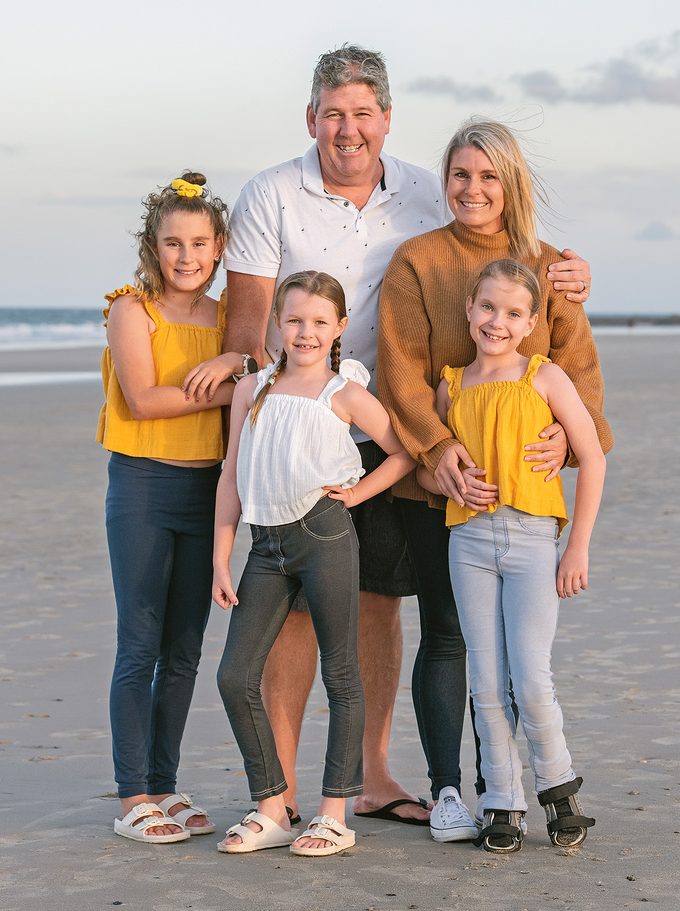
If Hallee qualifies for the 2028 Paralympics, which will be held while she’s still in high school, she’ll consider trying out for the 2032 Games in Brisbane.
And after that? All Gavin and Christine want is for Hallee to be happy and independent. As for Hallee, she dreams of being a midwife. It’s something she told her mum a few years ago but was torn because she also wanted to be a Paralympian. Christine told her that she could do both; if she made it to the Paralympics, she could tick that off her list, then study to be a midwife.
When asked what she would say to other children with a disability, Hallee offers two powerful pieces of advice: “Don’t listen when people say you can’t do something. And try your best.”
Next, read about the blind skier from Alberta who competed in the 2016 Paralympics.
